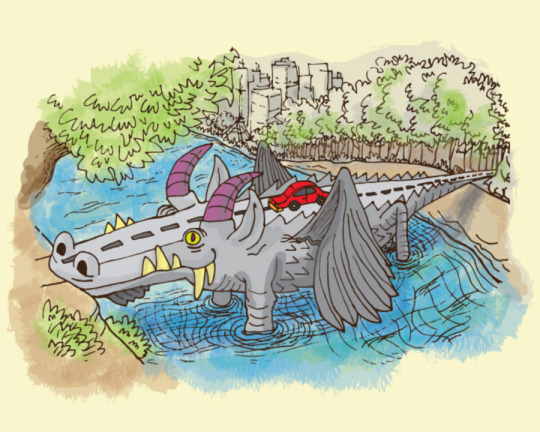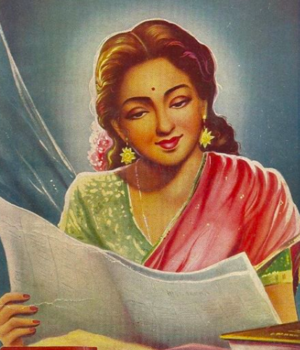
There’s just something special about children’s books. Regardless of age, almost all of us can recall our favourite storybook from when we were little. Whether Winnie The Pooh, Aesop’s Fables or Amar Chitra Katha, they were all visual treats and it was a joy to turn the page to see what came next.
Creating children’s books is an art unto itself. We chatted with Vinayak Varma, writer, designer, editor and illustrator from Bangalore, who has over a decade of experience creating characters, stories, and artwork for children’s books. In the following interview, he tells us about how he started out as an illustrator, and how technology has changed the game.
1) Tell us a little about yourself. What led you to illustrating children’s books?
I design, write, edit and illustrate for a living. Presently, my clients come from  two industries: children’s publishing and beer brewing. These may seem incongruous at first glance, but don’t be fooled – the one can often lead to the other.
two industries: children’s publishing and beer brewing. These may seem incongruous at first glance, but don’t be fooled – the one can often lead to the other.
I got into children’s books quite by accident. Unable to get a sound-mixing internship as part of my film studies and video production course, I got a last-minute internship at Tulika Books. I started out doing the odd design job for them, but ended it writing and illustrating my first children’s book (Up Down). There weren’t a lot of children’s book illustrators working in the publishing industry at the time, so it was easy to get more projects once I had my first book out.
2) Is creating books for children easier than books for adults?
I’m not sure if the act of making books can be subject to such broad-spectrum analysis. Every book is a unique beast with its own morphology and set of behaviours, and so it is with its creation.
Only one comparison is true, in my estimation: it’s always difficult to produce an entertaining, relatable, well-told story that truly stands the test of time, while it’s far, far too easy to create something that’s forgettable – and this holds true for every book, regardless of the age of its reader.
3) You have been illustrating for about 15 years now. How has the field of illustrating changed since you first started? Is it still changing?
The biggest change has been the role of technology and the internet in shaping the profession.
I’m from that strange halfway generation that bridged analog and digital cultures. The technological changes we’ve seen between the turn of the millennium and today have been rapid and all-encompassing, but thankfully we were young enough when they happened that we were able to adapt with relative ease.
When I started out, we used to scan or photocopy references from library books, use light-tables to trace copies of our drawings, and almost exclusively illustrate using traditional media. Photoshop and Illustrator were terribly limited in their features, and were invariably last-mile assembly platforms, to be used after most of the work was already done by hand. When I began hustling for jobs, my illustration portfolio was a large physical folder of actual printed samples of my work that I’d carry with me to the offices of prospective employers.
However, our generation was also the first to adopt blogging and social media channels, to use digital input devices to draw, to experience virtual worlds, and so much more -to literally see science fiction become reality. So, while I often wish we had access to things like high-speed broadband connections and smartphones,self-promotion platforms like Instagram and pressure-sensitive drawing tablets like iPad Pros, I also do believe that having emerged from the pre-digital era probably made our crop of designers and illustrators more patient and methodical in our work, and (hopefully) a little less susceptible to the fleeting nature of social media attention. That’s an acceptable trade-off.
4) A quick glance at your LinkedIn profile reveals the many projects you’ve worked on. Which amongst them did you enjoy most and why?

All of the firsts! My first children’s book, my first branding project, my first exhibition design project, my first published article, my first editing job, my first publication design job – every first project in a brand new domain has been both difficult and rewarding.
At the risk of reading like a particularly trite fortune cookie, I think it’s in one’s best interests to actively seek out the unknown and the unexplored. Fear and conflict can be uncomfortable, but if unpacked using the right logic and mindset they can also be exciting, teach you valuable life skills and push your creativity in unanticipated directions.
5) One of these was ‘Brainwave’, a science magazine for young readers. What prompted you to create it?
.jpg)
It was created with the noblest of intentions: as a way to get kids to associate science with excitement and wonder, with the intricate beauty of all living systems and all human endeavor, rather than with the drudgery of a school textbook.
Our rather optimistic vision was for the magazine to spark off a kind of national movement that would galvanize the Indian scientific community’s outreach efforts by its very existence. Sadly, the business arm (which had to battle practical demons such as sales targets and distribution mechanisms and budgets and things) gave way well before Brainwave’s content could attain anything approaching virality.
6) What advice would you give to those interested in being an illustrator or a children’s book writer?
Try different styles and techniques, improve your basic drawing skills, put your work out there, and don’t hesitate to approach publishers or clients directly. Make cold calls, set up meetings, and send out those awkward exploratory emails. No one ever got a project by sitting around and waiting.
And once you get a project, be sure to communicate with your client constantly. Everyone misses deadlines or makes errors in judgments, but people (editors) are far less inclined to forgive the shirkers who stay silent instead of writing in, being honest about their minor crises and asking for extensions. Why? Because everyone has schedules to plan, and silences are hard to plan around. Trust me on this — I learned the hard way.
6) Any new projects we should keep an eye out for?
I’m presently working on a picture book, a short story anthology and (yes, you guessed right) a beer brand. They’re all exceedingly interesting, and I’m pretty sure I’m going to miss all my deadlines. But at least I’m being honest about it.
Check out more of Vinayak’s work on his website and follow him on Facebook and Instagram for a feed that will make yours a more interesting one.
Written by Swoyam Tuladhar
Feature Image Credit: Vinayak Varma













